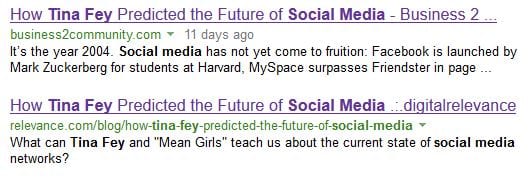Panda, Penguin, Hummingbird. Do these names ring a bell? If yes, then you are a person fairly updated on what’s happening on the SEO front.
Keeping pace with Google algorithm updates have now become a way of life for digital marketers. Every time a new update is announced, they get down to restructuring websites for clients almost instinctively, knowing well that if they don’t, the rankings might plunge southwards and set off a series of events that can adversely affect current business and future prospects.
Those who have been keeping a close watch on these updates and related developments say that one aspect that has not changed much despite all the updates is on-page SEO. This, despite the fact that every on-page SEO task is aimed at benefitting the end-user.
[bctt tweet=”The extent of engagement of a user when they visit your web page is the indicator of its value.” username=”relevance”]
The more time they spend there, the greater is the value of that web page.
This on-page SEO cheatsheet aims to help you understand the core factors that one must focus on for better results. When done right, the takeaways are better rankings, enhanced search traffic, and the other positive offshoots of these benefits.
So what are the factors you should focus on?
Creating Content That Drives Search Traffic

“When we create something, we think, ‘Will our customers thank us for this?” – Ann Handley
All those groundbreaking technologies and jazzy tools have not been able to dislodge content as the most vital factor for any business. But merely offering quality content is not enough. Successful content marketing involves publishing relevant content that has the power to drive the right traffic. Keywords are of course important but you can create a powerful impact by using specific keyword phrase components constructed using long-tail anchor words.
[bctt tweet=”A surge in traffic can be expected when you start creating content using very specific keywords.” username=”relevance”]
Long-tail searches from customers or readers indicate a sense of urgency and a need to search for the exact thing they are looking for. Traffic emerging from such searches can enhance your stature among search engines because your content will be viewed as something that aims to solve problems by offering the right solutions.
You must aim to create content that is:
- Practical and valuable
- Offers interesting insights
- Aware of what’s going on in the user’s mind
- Easy to share
- Optimized
- Created to solve problems of readers
Custom content attracts readers and helps create a sense of deep trust and reliability. That’s why experts say that such in-depth and meaningful content is what companies should focus on to achieve their digital marketing objectives. What the reputed B2B marketing strategist said about content merits recall here:
“Content is the reason search began in the first place.”
Leveraging The Power of Meta Tags

Over the years, Meta tags, and the way they are used has undergone major changes. Many might think that they have lost some punch but Meta Tags still can play a key role in on-page SEO. Let’s find out how to use Meta Tags to make your content search engine friendly.
Title Tags are synonymous with the title of your web page as they offer previews that can help readers make a decision. Use short and descriptive titles that are different from the content on the page.
Meta Descriptions are used by search engines to identify the context of your content so that it can be connected to the relevant audience. There are a couple of things you must remember while writing Meta descriptions.
- Keep it short and relevant
- Avoid stuffing keywords
- On-page SEO can be improved by using Latent Semantic Indexing
Focusing On Boosting Site Speed

The speed at which a visitor gets to read the content on a website is one of the key metrics of SEO and a huge indicator of the user’s experience. You can always run a check on what your site speed is using one of the numerous tools easily available online for the purpose. However, site speed score often simplifies things more than it should probably do creating a false sense of security.
In any case, measuring speed is a tricky thing because you must first know what you are measuring and what the best possible reading for that particular matrix is so that corrective actions can be taken if needed.
“Just because you can measure everything doesn’t mean that you should.” – W. Edward Deming
It is important to understand that Google will only penalize websites that are excruciatingly slow. Site speed is more important from a user perspective. That’s why site speed must be optimized based on user experience. But yes, slow site speed can affect businesses such as ecommerce stores.
[bctt tweet=”For a good on-page SEO experience, site speed matters as it affects rankings.” username=”relevance”]
Site speed can vary when the same website is accessed from a desktop and a mobile device. Any speed check that you run must show the site speed of your page in the ‘excellent’ range for all devices.
Does the site speed show a lower than the desired result? You can easily resolve the problem by using search engine content delivery networks. You might have to spend some money but it will pay you great dividends sooner than later.
Code Optimization and Others On-Site Technical

This is a technical thing but if this can be done, it can help achieve your on-page SEO objectives.
Here’s what you should be doing:
- Make sure all JavaScript to be placed bottom of the page remains there
- Use canonicals where needed. Use a canonical tag in your header point out the original page that should be considered for ranking to Google if there is a duplicate page too.
- Add title tags to href tags and use descriptions to describe the same.
- An obvious thing to do is to make your website responsive and mobile-friendly (Believe me, some people still need reminders on this!)
- The site map submitted to Google must be updated frequently
Great on-page is a fine combination of understanding of the needs of customers and trying to solve the problems they generally face and doing accurate keyword research with the best available tools. Some reverse engineer tricks can help you find the exact keywords your customers are using. Your content must be crafted using these vital inputs to achieve a rich, high-value, and informative article that can resonate with your readers.









